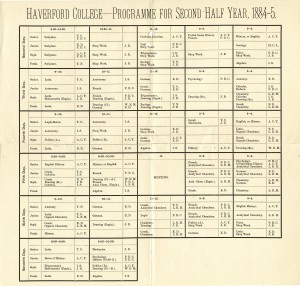In 1885, structured schedules defined a core curriculum for students including oral exams, physical education, and personal hygiene. In addition, the programme for students included attendance at Meeting, and two hours of supervised reading. Such supervisory practices were undoubtedly seen as a guiding pathway to prevent students from straying into the temptations of novel reading or other activities that might be categorized as immoral. As the formal routines and curriculum of Haverford provided structure for students, literary societies became the place where they would establish their own voices.



